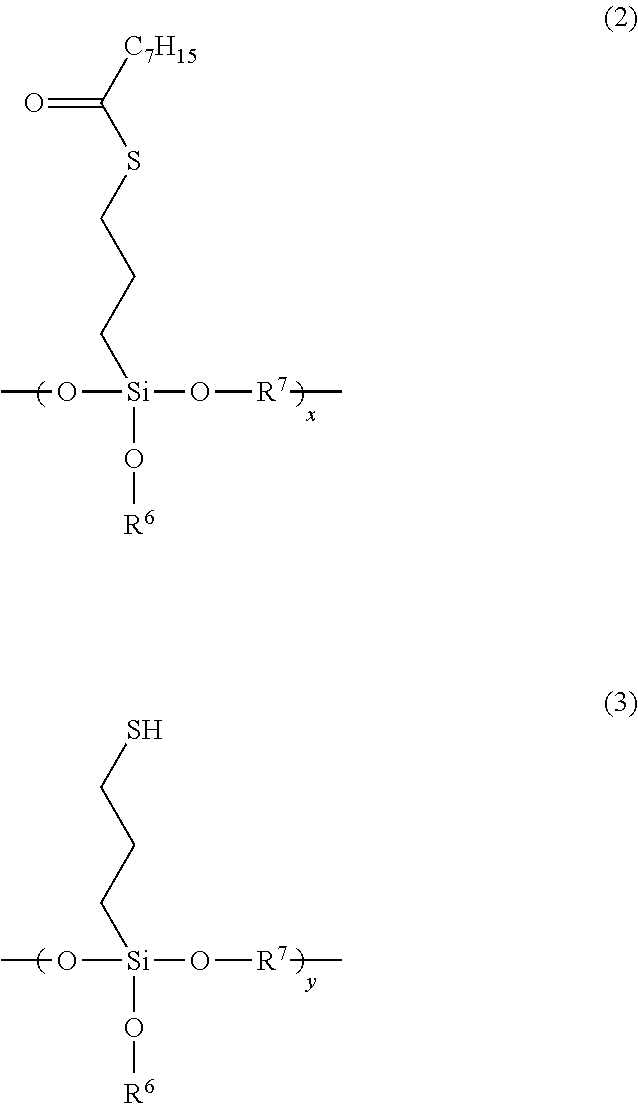Tire rubber composition and heavy-load tire
a tire and composition technology, applied in the direction of tyre tread bands/patterns, tire parts, textiles and papermaking, etc., can solve the problems of reducing rubber strength, difficult to achieve both fuel economy and abrasion resistance at high levels, and reducing rubber strength, so as to achieve good fuel economy and abrasion resistance, good degradation resistance and process ability
- Summary
- Abstract
- Description
- Claims
- Application Information
AI Technical Summary
Benefits of technology
Problems solved by technology
Method used
Image
Examples
examples
[0107]The following will describe the present invention specifically with reference to Examples, but the present invention is not limited thereto.
[0108]The respective chemical agents used in Examples 1 to 4 and Comparative Examples 1 to 3 are listed below.
[0109]Natural rubber latex: Field latex obtained from Thaitex
[0110]Surfactant: Emal-E produced by Kao Corporation
[0111]NaOH: NaOH produced by Wako Pure Chemical Industries, Ltd.
[0112]NR: TSR
[0113]HPNR (saponified natural rubber): Preparation 1 mentioned below
[0114]Non-modified BR: BR150B produced by Ube Industries, Ltd.
[0115]Modified BR: Modified butadiene rubber produced by Sumitomo Chemical Co., Ltd. (S-modified BR (terminal-modified), vinyl content: 15% by mass, R1, R2, R3=—OCH3; R4, R5=—CH2CH3; n=3)
[0116]Carbon black: SHOBLACK N220 produced by CABOT JAPAN K.K. (N2SA: 111 m2 / g)
[0117]Wax: Sunnoc Wax produced by Ouchi Shinko Chemical Industrial Co., Ltd.
[0118]Age resistor: Age resistor 6C (SANTOFLEX 6PPD) produced by FLEXSYS
[0119]...
preparation 1
[0123]The solids content (DRC) of natural rubber latex was adjusted to 30% (w / v). Next, 1000 g of the natural rubber latex was mixed with 10 g of Emal-E and 20 g of NaOH, and then saponified for 48 hours at room temperature. Thereby, a saponified natural rubber latex was produced. The saponified latex was diluted with water to a DRC of 15% (w / v). The diluted latex was mixed with formic acid, while being slowly stirred, so that the pH was adjusted to 4.0 to 4.5. The latex was coagulated, and the coagulated rubber was broken up and repeatedly washed with 1000 ml of water. Then, the rubber was dried for two hours at 110° C., and thereby a solid rubber (saponified natural rubber) was obtained.
[0124]TSR and the solid rubber produced in Preparation 1 were determined for nitrogen content, phosphorus content, and gel content by the following methods. Table 1 shows the results.
(Determination of Nitrogen Content)
[0125]The nitrogen content was determined with CHN CORDER MT-5 (produced by Yanac...
PUM
| Property | Measurement | Unit |
|---|---|---|
| temperature | aaaaa | aaaaa |
| temperature | aaaaa | aaaaa |
| atomic numbers | aaaaa | aaaaa |
Abstract
Description
Claims
Application Information
 Login to View More
Login to View More - R&D
- Intellectual Property
- Life Sciences
- Materials
- Tech Scout
- Unparalleled Data Quality
- Higher Quality Content
- 60% Fewer Hallucinations
Browse by: Latest US Patents, China's latest patents, Technical Efficacy Thesaurus, Application Domain, Technology Topic, Popular Technical Reports.
© 2025 PatSnap. All rights reserved.Legal|Privacy policy|Modern Slavery Act Transparency Statement|Sitemap|About US| Contact US: help@patsnap.com



